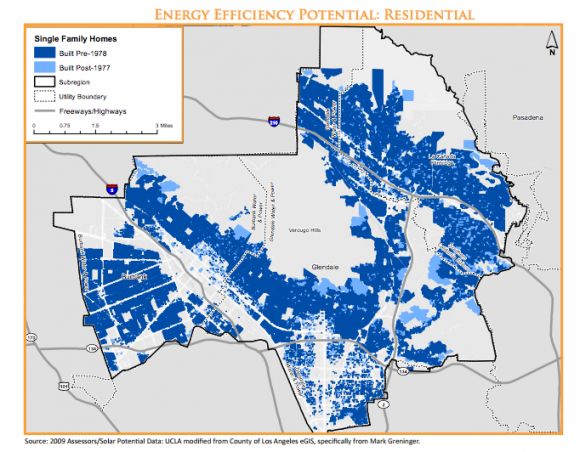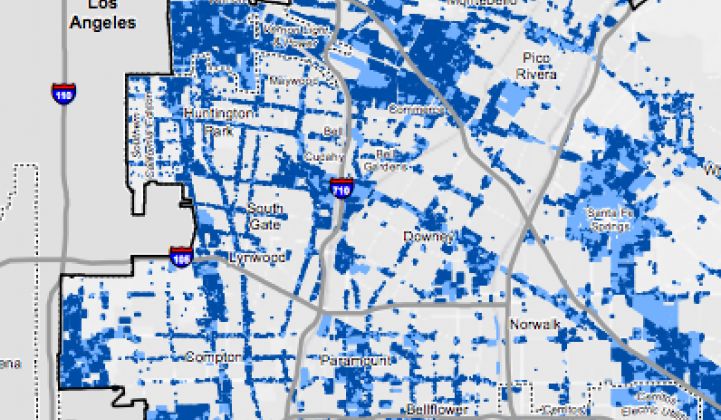An innovative new mapping tool may help businesses in Los Angeles identify new opportunities for clean energy investment -- and teach them a few tricks when it comes to approaching different market segments.
The project, co-sponsored by the Environmental Defense Fund and UCLA, shows that LA efficiency potential is ripe: There are 1.5 million buildings in LA built after 1978, when energy efficiency codes went into effect. This means that up to 80 percent of buildings stand to gain from efficiency upgrades.
With a total rooftop solar potential of 5,676 megawatts and strong local incentives, solar resources are also vast in the city.
So how can businesses tap into all that efficiency and solar potential? Navigating through the mapping tool, what jumps out about the initial overlays isn’t the explicit business opportunity, but rather the serious climate threat to the city. There are “heat maps” showing how susceptible different parts of the city are to temperature rise and health risks.
But taking action on climate change in one of the biggest U.S. cities could bring some serious investment. This is always the case in the abstract, but the mapping tool -- called the Los Angeles Solar and Energy Report, or LASER -- makes the business case by specifically identifying and quantifying solar and energy efficiency investments throughout the city. The heat-map approach shows different areas within the city that are particularly well suited to different kinds of clean energy investments with multiple different solar capacity and energy efficiency potential overlays.

There is both a market classification (residential, multi-family, etc.) and a market segmentation (different kinds of customers) angle to the mapping layers that will be valuable to businesses.
On market classification, for example, the solar capacity map breaks out the different kinds of roof space; showing Los Angeles with 71 percent single family rooftops, 20 percent multi-unit, 8 percent commercial and industrial, and 1 percent government and nonprofit. This means that different kinds of businesses can target their customers more efficiently. For solar companies that have strengths in third-party leases on single-family homes, it is valuable to isolate the regions where their business can thrive. Likewise, if an energy efficiency company specializes in addressing split-incentives for multi-unit properties, it can find its niche as well.
But the climate vulnerability index also offers a market-segmentation angle to businesses. By showing families or businesses that a specific part of the city has a much higher risk associated with it due to a dangerous combination of high temperatures and air pollution, switching to solar or utilizing efficiency solutions may become a personal priority. There are many customers who like the economics of solar and efficiency and are driven by the bottom line. But there are others who may find the personal reality of living in an at-risk zone even more compelling. At worst, the increased awareness can help customers understand some of the externalized costs (health, water quality) that are associated with reliance on fossil fuels.
The market segmentation and classification benefit is particularly significant for solar, where consumer acquisition will represent a crucial inflection point in lowering overall costs over coming years. Developing tools that can help target the right customers for different business models will complement the internal shifts already occurring as these companies start thinking about innovative ways to speed up their sales cycles.



